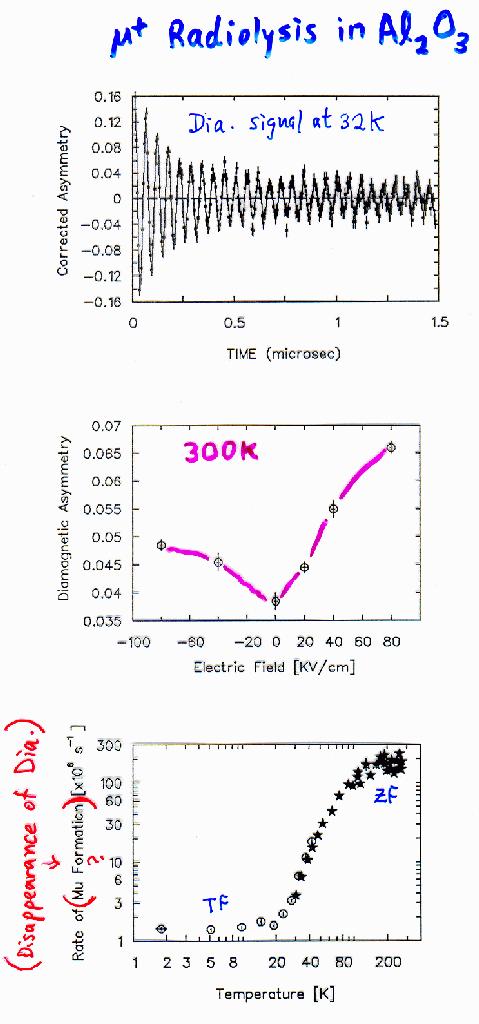Delayed Muonium Formation in Sapphire
In sapphire (crystalline alumina, Al2O3)
muonium (Mu) is formed when the stopped µ+
captures a radiolysis electron created in its ionization track.
At low temperatures, this takes place over a long enough time
(~300ns) to be observed directly in the decay of the
diamagnetic muon precession signal.
The rate of Mu formation (presumably governed primarily by
the effective mobility of the electronic polaron as it is
"sucked in" by the muon's electic field) has an
Arrhenius-like
temperature dependence with an activation temperature of 140(1)K,
suggesting classical "over-barrier"
hopping as a diffusion mechanism.
A slowly-relaxing diamagnetic signal is also present
at low temperature,
presumably representing those muons which stop further
than one Onsager radius
from the last radiolysis electron created in their path.

At high temperature, muonium is formed within a few ns
and the precursor diamagnetic signal is barely detectable.
All that remains is a slowly-relaxing diamagnetic component
that can be affected by an applied electric field E
in the usual way: for positive E (along the original
muon momentum direction) the formation of muonium (Mu)
at early times is strongly inhibited, increasing the
long-lived diamagnetic signal amplitude;
whereas negative E (in the opposite direction)
is significantly less effective at overcoming the
Coulomb attraction between the µ+
and e- polaron.
This anisotropy indicates that the radiolysis electrons
produced as the muon comes to rest are on average
"behind" the µ+ but their spatial
distribution overlaps the muon's stopping position.
Author: JHB.
Figure created ~1996.
See TRIUMF Expt 693.
Prepared by
Jess H. Brewer
Last modified: Mon Dec 1 13:58:43 EST

